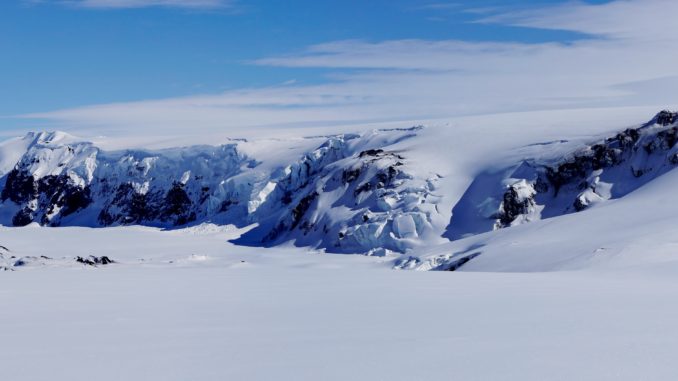
This article was published in Geophysical Research Letters.
Let’s talk about Iceland today! Our open access GRL study links the recent mass loss slowdown of Icelandic glaciers to the Blue Blob, a regional cooling in the North Atlantic Ocean.
As Icelandic glaciers do not typically reach the ocean, their mass change is driven by their surface mass balance (SMB). It means that mass loss occurs when winter snowfall accumulation is smaller than meltwater runoff in summer.
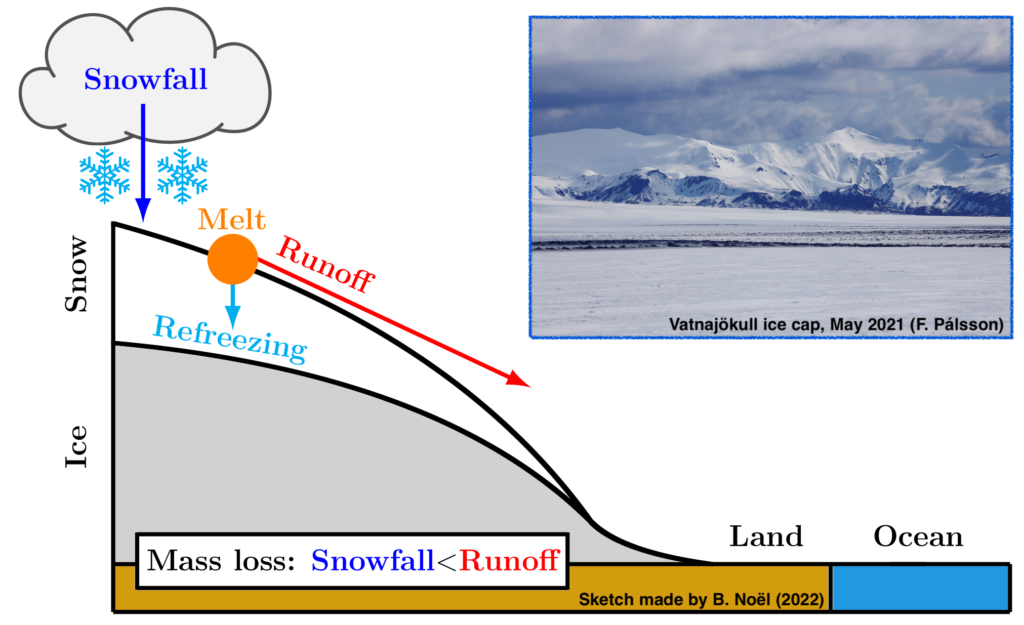
Our high-resolution regional climate model shows that Icelandic glaciers shifted from approximate mass balance to mass loss in the mid-1990s, following increased runoff. But, surprisingly, mass loss slowed down after 2011, as confirmed by satellites and stake measurements.
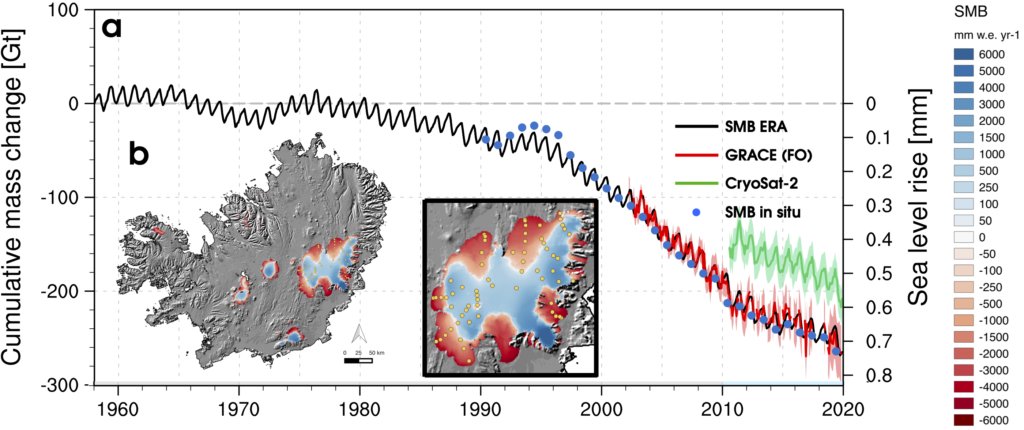
We found that the mass loss slowdown could be linked to the Blue Blob, a regional cooling in the North Atlantic Ocean to the south of Greenland. The blue blob has previously been observed, but, as of yet, its formation has not been conclusively explained.
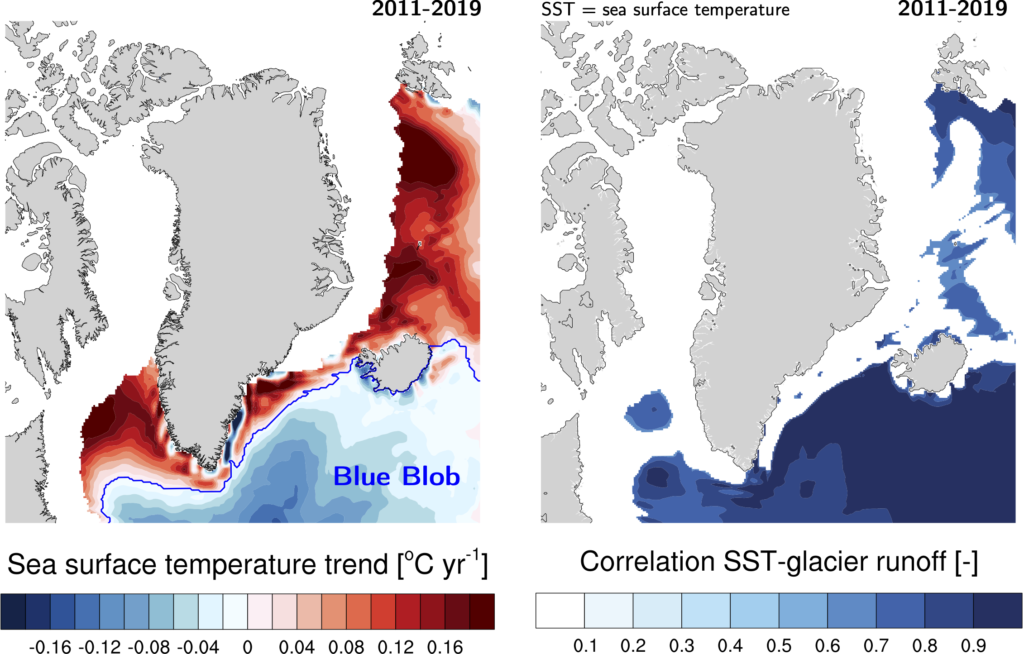
Our finding is confirmed by a strong linkage between Iceland glacier runoff and sea surface temperature in the Blue Blob. We conclude that cooling in the Blue Blob triggered the post-2011 glacier mass loss slowdown. But will this persist in the future?

We used an earth system model to predict what would happen by 2100 under a high-end warming scenario. It shows continued cooling in the Blue Blob and reduced mass loss until the 2050s, with warming resuming thereafter.
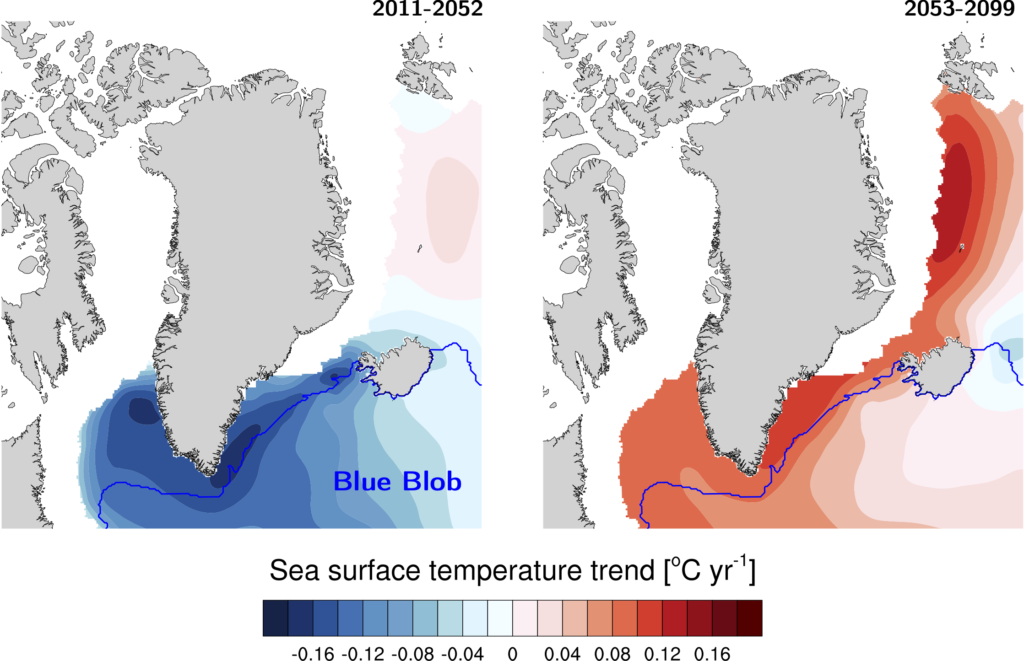
Under this strong warming scenario, the Blue Blob only temporarily mitigates mass loss of Icelandic glaciers. When warming resumes in the 2050s, mass loss accelerates again marking a plot twist, and Iceland could lose one third of its current glacier volume by 2100.
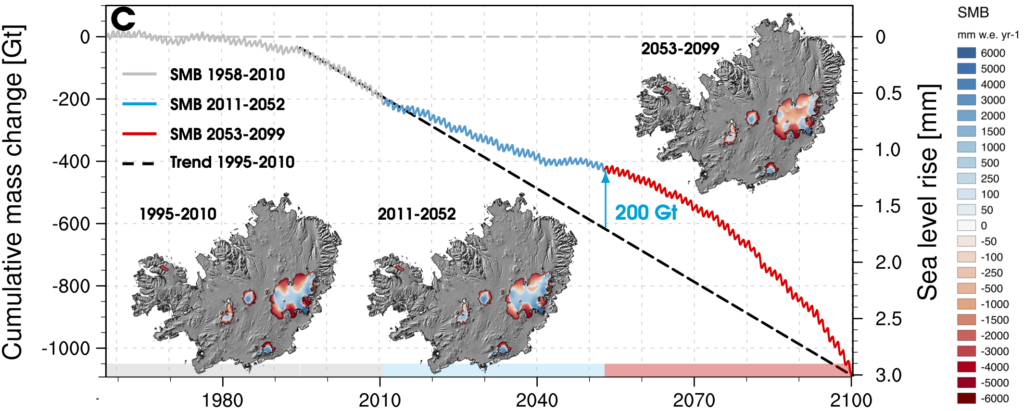
By Brice Noël, Guðfinna Aðalgeirsdóttir, Finnur Pálsson, Bert Wouters, Stef Lhermitte, Jan M. Haacker, Michiel R. van den Broeke
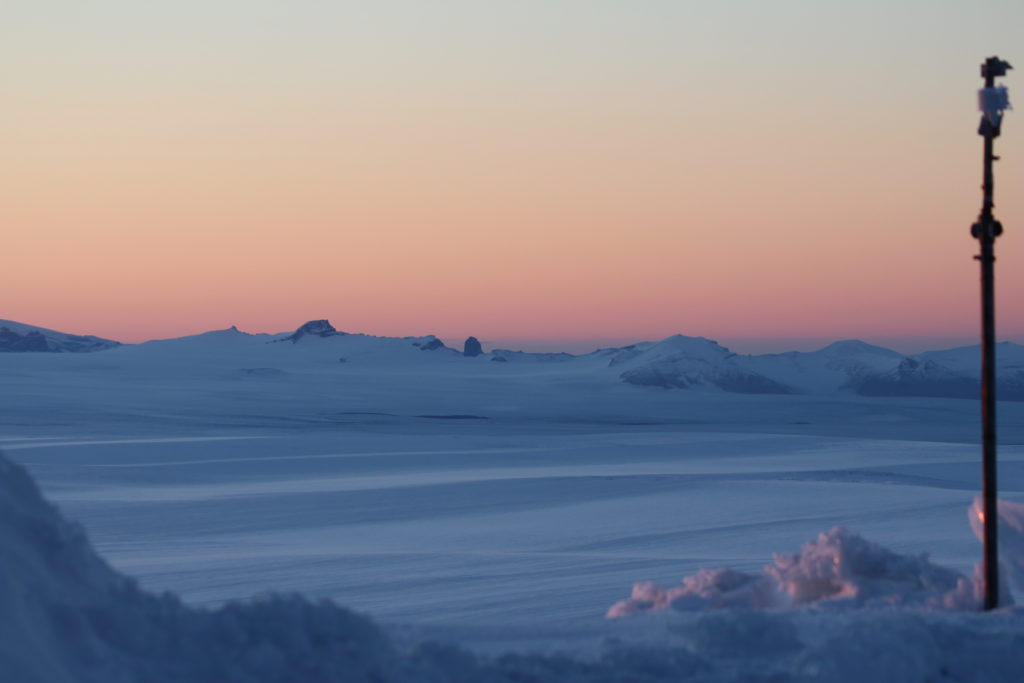
You can also read here the press release linked to the publication:

Leave a Reply